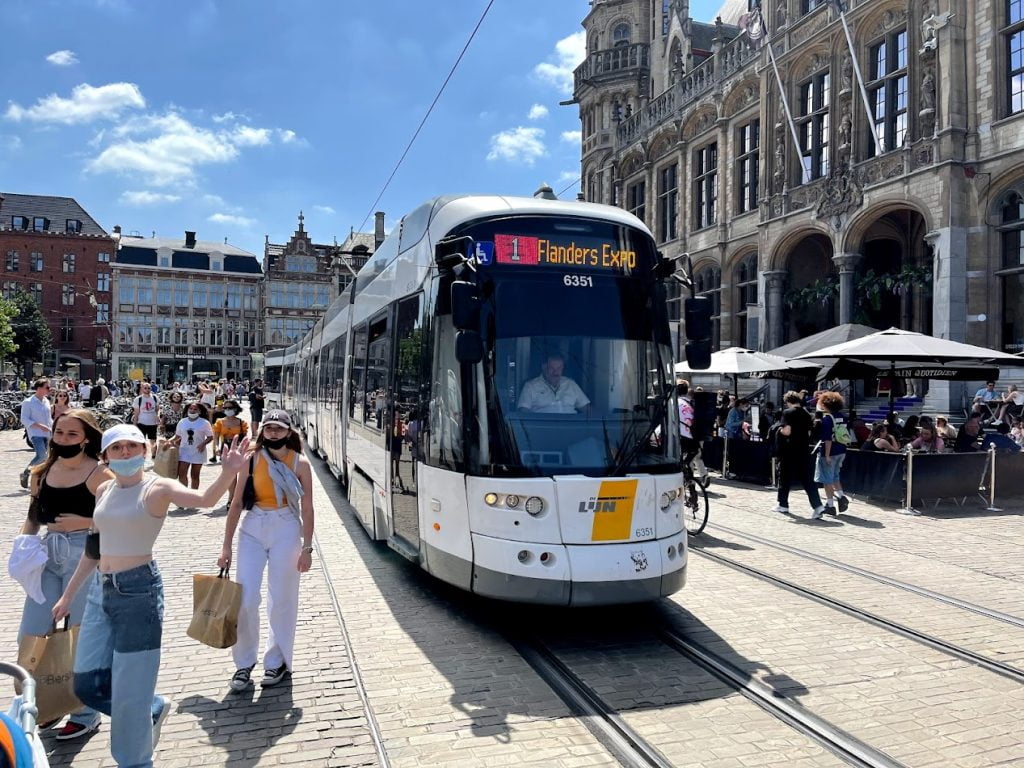The December issue of Magazine Personen Vervoer contained an extensive article by Geert Van Lierde about the continuing problems encountered by cyclists in the narrow central streets of Ghent due to the tram rails, the layout of those streets and the overdue maintenance thereof ('500 cyclists in Ghent on the road every year). Emergencies'). At the beginning of last week, the editors of the trade magazine Magazine Personen Vervoer supplemented this in-depth piece on this website with a interview with the Cyclists' Union Ghent.

On Boxing Day they also received a response from Luc Desmedt of the non-profit association Reizenbond, which we also publish in full below:
Anti-parking bollards – 'Anti-parking bollards' were placed to prevent motorists from parking on the sidewalk. In the event of a fall, these poles can form a dangerous obstacle as an obstacle. After the accident with a skidded and fallen cyclist at Lippensplein last summer, the Ghent city council asked the Mobility Company to investigate the 'depalation' and to remove poles that could pose a risk to (falling) cyclists. Some anti-parking bollards have already been removed, others will be removed (listen to the report of the Ghent Municipal Mobility Committee, 07.12.2021).
single track – Bringing it to single track (strand track) is not a useful 'way out' in Ghent in our opinion. In Basel (photo published in PV 06/2021 of a suburban tram line Baselland Transport) the remaining, exclusively suburban, single-track routes will be converted to double track as much as possible. Despite the punctual service, an even more frequent suburban tram service in Basel is no longer feasible if the single track alternately operated in both directions is maintained.*
Already 20 years ago, single track (instead of double track) was also investigated at the request of the Ghent city council for the tram axis between Kortrijksepoort and Koophandelsplein (approx. 800 meters, tram every 6 minutes), with the same conclusion: not feasible.
Tram bus – A trambus is actually just a double-articulated bus, which can transport just under half the number of travelers that fits in an Albatros tram of approximately 43 m. To transport the same number of travelers as the Albatross, at least twice as many trambuses and drivers are needed. : in any case permanently higher operating costs.
After considering whether to operate by tram or by trambus, the conclusion was therefore: the busy bus bundle 7 Gent-Sint-Pieters – Zuid – Dampoort station must be tramped. Due to the greater width (2,55 m with exterior mirrors) and the winding 'lace corridor', trambuses require a wider cross section than the track-related, 2,30 m wide tram. In the narrower Ghent 'invasion streets', trambuses could only cross each other if the longitudinal parking (and loading and unloading) lane is removed, including (corona) street terraces. At the narrow passages in the city center (eg Korenmarkt/Groentenmarkt; Vleeshuisbrug…) the trambuses would not be able to cross each other but would have to wait their turn (and the following cyclists as well).
Trials with rubber strips underway - The Travelers' Union has been consulting with the Cyclists' Union in Ghent for years. The 'active' road users benefit from cooperation. After all: more tram supply (and tram passengers), more bicycle parking facilities and more well-marked bicycle routes, no more risky maneuvers on the street tracks? This also means: less avoidable car traffic, fewer risks for cyclists and tram passengers/pedestrians, as well as a more pleasant living environment.
If hard-to-pry and non-wearing rubber strips in street tracks could help prevent cyclists from falling, then all 'active' road users would benefit. That is also why we are closely following the recently started practical tests with a new type of rubber strips (in tracks – meter gauge, exactly as in Ghent and Antwerp – which are in frequent use) in Basel and Brandenburg an der Havel, in order to develop direct contacts with the local tram companies, the city services and the public transport and cyclist associations.
Luc Desmedt, non-profit travel association.


